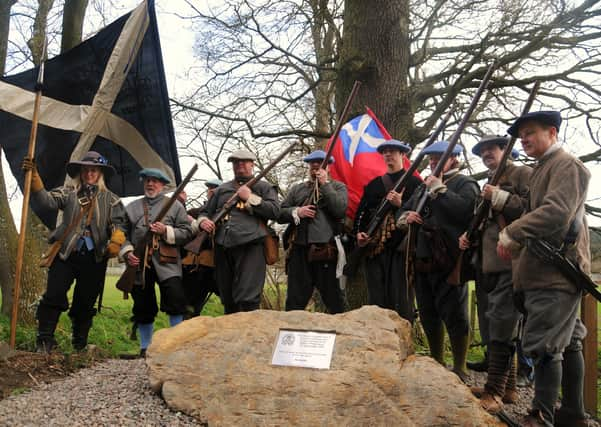Selkirk waterworks revamp given go-ahead despite battlefield location


An application submitted by Scottish Water in September for the erection of a new membrane building almost 8m high and five 3m-high borehole buildings at its Howden Wells water treatment works, near Howden Farm, has been approved.
One of the organisations consulted by Scottish Borders Council planning officers considering the application was Historic Environment Scotland (HES) as the site is within the boundaries of a 17th century battlefield south-west of the town.
Advertisement
Hide AdAdvertisement
Hide AdThe battle of Philiphaugh – fought on September 13, 1645 – ended the royalist campaign started the year before by James Graham, the first Marquess of Montrose, and it was the only defeat he suffered during it.
The battle, part of the Wars of the Three Kingdoms waged from 1639 to 1651, left his army so depleted after their defeat by Covenanter forces led by David Leslie, the first Lord Newark, that it marked the end of any organised royalist ambitions in Scotland.
Despite the location of the site, Historic Environment Scotland decided to raise no objections to the water board’s plans because it is satisfied any physical impact on the battlefield will be limited.
Tom Gardner, case officer for the organisation, said: “The proposed works would see construction of industrial buildings in the centre of the battlefield boundary, to the immediate south-west of the main battle lines and along the lines of the royalist army’s rout, both to the south-west towards Howden and to the west towards Harehead Wood.
Advertisement
Hide AdAdvertisement
Hide Ad“As the proposed development is limited in its total footprint, the potential physical impact upon the battlefield or any archaeological remains associated with the battlefield is very limited.
“Equally, as the proposed works would add to the pre-existing water treatment facility, they would be in keeping with the established use of the area and would make a limited impact upon the setting of the battlefield in this area.”
The council’s own archaeology officer, Chris Bowles, didn’t object either but did request that conditions be imposed, saying: “There is a low to moderate potential for encountering buried archaeological evidence within the development site.
“Given that, I recommend an archaeological trench evaluation across the areas of the site where there will be ground disturbance. This should cover 10% of the area that will be disturbed.
Advertisement
Hide AdAdvertisement
Hide Ad“No development shall take place within the development site until the developer has secured a written scheme of investigation detailing a programme of archaeological works.”
In a report recommending approval under delegated powers, council planning officer Brett Taylor says: “The development site is in an area suspected to have been at the core of the battle of Philiphaugh fought in 1645 between the forces of the marquess of Montrose and the Covenanters led by David Leslie.
“There is a high potential for encountering buried archaeology anywhere within the battlefield core, including items associated with the battle and burials of those who fought.
“Given that, a condition is therefore attached to this permission for archaeological survey to be undertaken.
Advertisement
Hide AdAdvertisement
Hide Ad“The proposal has been designed to blend in with the surrounding landscape with the existing woodland and vegetative screening providing adequate screening for the site.
“Overall, I consider the proposal will not have a significantly adverse effect on the appearance of the surrounding area.”
Comment Guidelines
National World encourages reader discussion on our stories. User feedback, insights and back-and-forth exchanges add a rich layer of context to reporting. Please review our Community Guidelines before commenting.